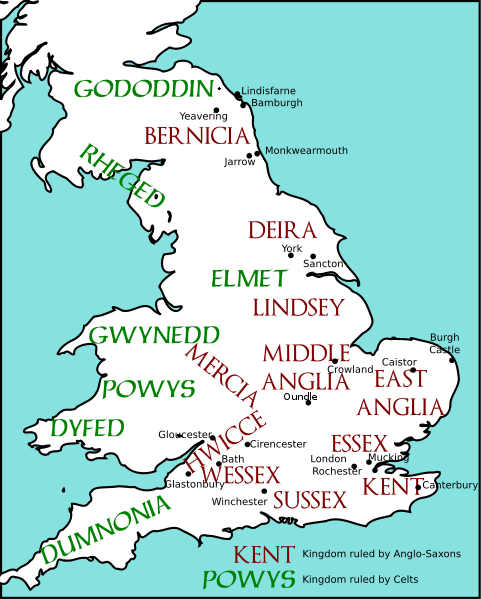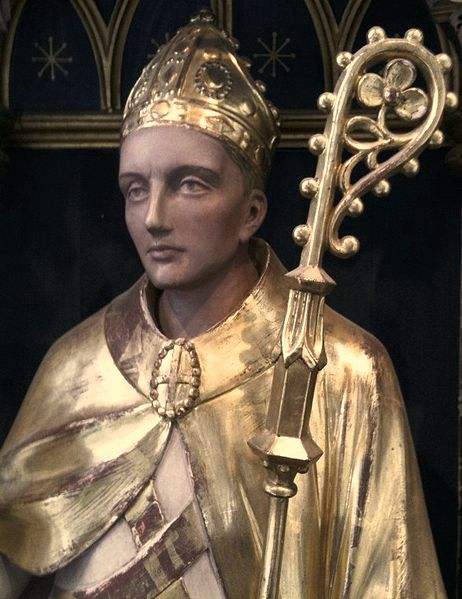Saint Sigebert
King and martyr, date of birth unknown; died about 637, was the stepbrother of Earpwald, king of the East Angles.

Map of England and Wales, showing Anglo-Saxon and Celtic kingdoms as of c. 600, showing the kingdom of East Anglia during this time.
During the reign of Redwald he lived an exile in Gaul where he received baptism and became an ardent Christian. Earpwald died about 627, and East Anglia seems to have relapsed into anarchy and heathenism for some three years until Sigebert returned thither, about 631, and became king. He at once set about the conversion of his people, being greatly assisted by St. Felix, who seems to have come over from Gaul with him, and for whom a see was established at Dunwich in Suffolk. Another prominent figure in Sigebert’s revival was the Irish monk, St. Fursey, or Fursa, for whom he built a monastery at Burghcastle in Suffolk. With the aid of St. Felix, Sigebert also established a school for boys on the model of the monastic schools in Gaul, the masters for it are said to have been supplied from Canterbury, The prospects of Christianity now seemed so bright that Sigebert felt justified in carrying out his long-cherished design of retiring to a monastery. He therefore resigned the kingdom to his kinsman, Egric, received the tonsure, and entered a monastery, said to have been Bedrichsworth, which later became Bury St. Edmunds.
Not long after this, however, Penda the pagan King of Mercia, invaded East Anglia, and Egric, finding himself unable to repel the invasion, joined with his subjects in begging Sigebert to lead them, as he had formerly been a most brave warrior. In spite of his great unwillingness, Sigebert was dragged from his cloister and compelled to march at the head of the army; but, to indicate his profession as a monk, he refused absolutely to carry any weapons of war and instead bore only a rod. In the ensuing battle his army was totally defeated, he and Egric both perishing in the fight. In the “Acta Sanctorum” his life is given under date of October 29, but the feast is not now observed even in England.
Bede, Hist. eccles., ed. Giles (London, 1843), II, xx, III, xviii, also in P. L.; Acta SS., Oct. XII, 892–904; William of Malmesbury, Gesta Regum, I, xcvii; Idem, Gesta pontificum, 147, both in Rolls Series (London, 1870–1887); Liber Eliensis, ed. Stewart, I (London, 1848), i; Dugdale, Monasticon anglicanum, III (London, 1846), 98; Pits, De illustribus Angliæ script. (Paris, 1619), 108; Stanton, Menology of England and Wales, (London, 1887), 35.
G. Roger Hudleston (Catholic Encyclopedia)










